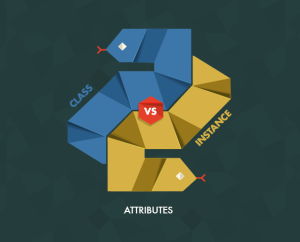Introduction to Database Normalization
In the realm of database design, normalization is a crucial concept that ensures data integrity and reduces redundancy. By organizing data into logically structured tables and eliminating data anomalies, normalization promotes efficient data storage and retrieval. In this article, we will explore the fundamentals of database normalization, including the different normal forms and their practical applications.
What is Database Normalization?
Database normalization is a process that involves structuring a relational database to eliminate redundancy and improve data integrity. It follows a set of rules, known as normal forms, which define the criteria for organizing data efficiently. The primary goal of normalization is to minimize data duplication, ensure data consistency, and simplify database maintenance.
The First Normal Form (1NF)
The first normal form (1NF) sets the foundation for database normalization. To satisfy 1NF, a table must meet the following requirements:
- Atomic Values: Each column in a table should contain atomic values, meaning it should hold only a single piece of data.
- Unique Column Names: Each column should have a unique name to avoid confusion and maintain data integrity.
- Distinct Rows: Each row in a table should be unique, and there should be no duplicate rows.
By organizing data into individual tables and ensuring atomicity, 1NF eliminates redundancy and prepares the data for further normalization.
The Second Normal Form (2NF)
The second normal form (2NF) builds upon the foundation of 1NF. To achieve 2NF, a table must satisfy the following conditions:
- 1NF Compliance: The table must already meet the requirements of 1NF.
- Single-Attribute Primary Key: The table should have a primary key composed of a single attribute that uniquely identifies each row.
- No Partial Dependencies: There should be no partial dependencies, meaning that non-key attributes should depend on the entire primary key and not on a subset of it.
By eliminating partial dependencies, 2NF further reduces redundancy and ensures data consistency.
The Third Normal Form (3NF)
The third normal form (3NF) takes normalization a step further. To achieve 3NF, a table must adhere to the following guidelines:
- 2NF Compliance: The table must already satisfy the requirements of 2NF.
- No Transitive Dependencies: There should be no transitive dependencies, meaning that non-key attributes should not depend on other non-key attributes.
By eliminating transitive dependencies, 3NF promotes data integrity and simplifies database maintenance.
Practical Examples of Database Normalization
Let’s illustrate the concepts of normalization with a practical example. Consider a fictional online bookstore database with two tables: Books and Authors. The initial design might look like this:
Table: Books
| Book ID | Title | Author | Genre | Price |
|---|---|---|---|---|
| 1 | The Great Gatsby | F. Scott Fitzgerald | Fiction | 10.99 |
| 2 | Pride and Prejudice | Jane Austen | Fiction | 12.99 |
| 3 | To Kill a Mockingbird | Harper Lee | Fiction | 9.99 |
Table: Authors
| Author | Country |
|---|---|
| F. Scott Fitzgerald | United States |
| Jane Austen | United Kingdom |
| Harper Lee | United States |
To normalize this database, we can create separate tables for books and authors:
Table: Books
| Book ID | Title | Genre | Price |
|---|---|---|---|
| 1 | The Great Gatsby | Fiction | 10.99 |
| 2 | Pride and Prejudice | Fiction | 12.99 |
| 3 | To Kill a Mockingbird | Fiction | 9.99 |
Table: Authors
| Author ID | Author | Country |
|---|---|---|
| 1 | F. Scott Fitzgerald | United States |
| 2 | Jane Austen | United Kingdom |
| 3 | Harper Lee | United States |
Table: BookAuthors
| Book ID | Author ID |
|---|---|
| 1 | 1 |
| 2 | 2 |
| 3 | 3 |
By splitting the data into separate tables and using primary and foreign keys, we achieve a normalized database structure.
Conclusion
Database normalization is a critical concept in database design that promotes data integrity, eliminates redundancy, and simplifies database maintenance. Understanding the different normal forms and applying them appropriately allows for efficient data storage, retrieval, and manipulation. By following the principles of normalization, you can create robust and scalable databases that effectively handle data in a structured and organized manner.

My name is Mark Stein and I am an author of technical articles at EasyTechh. I do the parsing, writing and publishing of articles on various IT topics.








+ There are no comments
Add yours